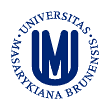



Karyotype: full monosomy X (45 X), often mosaic (e.g.45X/46XX)
Dysmorphic features and phenotype: broad webbed neck, broad chest with increased internipple distance, low hairline, swollen hands and feet in a newborn
Congenital malformations of the internal organs:
Turner syndrome:
 Turner syndrome, Macro, autopsy (73731)
Turner syndrome, Macro, autopsy (73731)
 Turner syndrome, Macro, autopsy (73732)
Turner syndrome, Macro, autopsy (73732)
 Turner syndrome, Macro, autopsy (73733)
Turner syndrome, Macro, autopsy (73733)
 Turner syndrome, Macro, autopsy (73734)
Turner syndrome, Macro, autopsy (73734)
Turner syndrome:
 Turner syndrome, Macro, autopsy (73735)
Turner syndrome, Macro, autopsy (73735)
 Turner syndrome, Macro, autopsy (73736)
Turner syndrome, Macro, autopsy (73736)
 Turner syndrome, Macro, autopsy (73737)
Turner syndrome, Macro, autopsy (73737)
Turner syndrome, fetus 15-week:
 Turner syndroma, Macro, autopsy (74009)
Turner syndroma, Macro, autopsy (74009)
Ultrasound examination in 20 w.g.: hydrops, nuchal hygroma 5 cm, pleural effusion, ascites. The aortic arch not visible, aortic atresia has been suspected.
Karyotype 45X.
Hydrops, edema over dorsum of hands and feet, nuchal cystic hygroma, hydropic face:
 Edema of feet, Macro, autopsy (72709)
Edema of feet, Macro, autopsy (72709)
 Edema of hands, Macro, autopsy (72710)
Edema of hands, Macro, autopsy (72710)
 Hydrops, nuchal edema, Macro, autopsy (72711)
Hydrops, nuchal edema, Macro, autopsy (72711)
 Hydrops, nuchal edema, Macro, autopsy (72712)
Hydrops, nuchal edema, Macro, autopsy (72712)
Coarcation of the aorta (narrowing of the aortic isthmus):
 Coarcation of the aorta, Macro, autopsy (72713)
Coarcation of the aorta, Macro, autopsy (72713)
Horseshoe kidney:
 Horseshoe kidney, Macro, autopsy (72714)
Horseshoe kidney, Macro, autopsy (72714)
Coarctation of the aorta, US video:
 Coarctation of the aorta, Ultrasound, video (72732)
Coarctation of the aorta, Ultrasound, video (72732)
Hydrothorax, ascites, cystic hygroma (US video):
 Hydrothorax, ascites, hygroma colli, Ultrasound, video (72731)
Hydrothorax, ascites, hygroma colli, Ultrasound, video (72731)